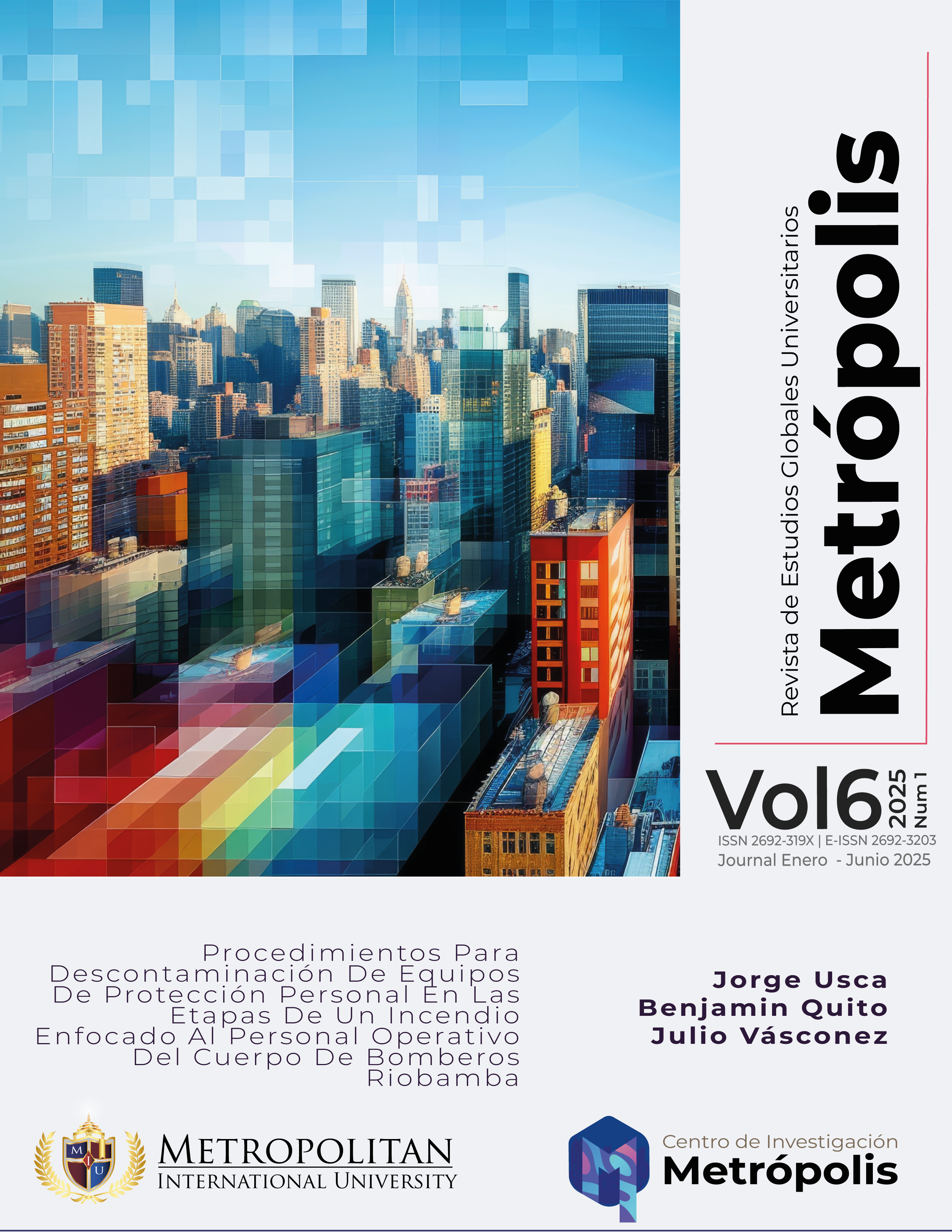Procedures for Decontamination of Personal Protective Equipment during Firefighting Stages Focused on the Operational Personnel of the Riobamba Fire Department
Keywords:
Decontamination, occupational safety, regulations, firefighters, contaminationAbstract
Regarding the decontamination of personal protective equipment, its correct application is essential for the safety of operating personnel. In this sense, exposure to toxic contaminants represents a latent risk, therefore, establish rigorous protocols to minimize adverse effects and optimize the functionality of the equipment. In turn, the NFPA 1851 standard provides specific guidelines for the cleaning of equipment, consequently, its implementation reduces the accumulation of hazardous waste, thus incorporating advanced technologies such as ozone and ultraviolet radiation, improving the elimination of toxic substances and reinforcing the safety of personnel. On the other hand, the challenges in the application of these protocols are numerous, with the scarcity of infrastructure and resources being one of the most significant barriers. This lack of adequate facilities and equipment often hampers the ability to implement the necessary safety measures and protocols effectively. In this context, it becomes crucial to invest in specialized equipment, which is vital for ensuring that the health and safety standards are met, particularly in environments. In this context, constant oversight through audits and quality controls strengthens the efficiency of procedures. Consequently, establishing periodic evaluations allows for optimizing their application and preventing cross-contamination, ensuring a safe work environment free of toxic agents that could endanger the health of professionals. Therefore, promoting a culture of prevention in fire departments facilitates the adoption of good practices. In this sense, the combination of international regulations, technological innovation and specialized training constitutes the basis for effective decontamination, reducing occupational risks and guaranteeing the safety of personnel.

Downloads
Published
How to Cite
Issue
Section
License

This work is licensed under a Creative Commons Attribution-NonCommercial-ShareAlike 4.0 International License.



